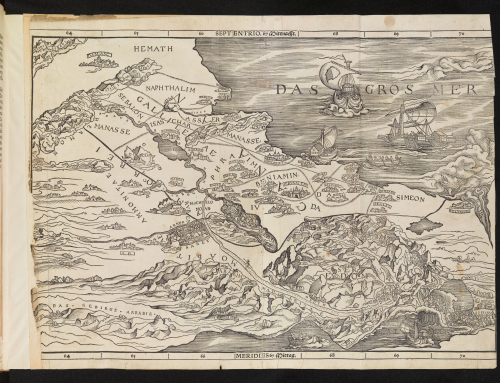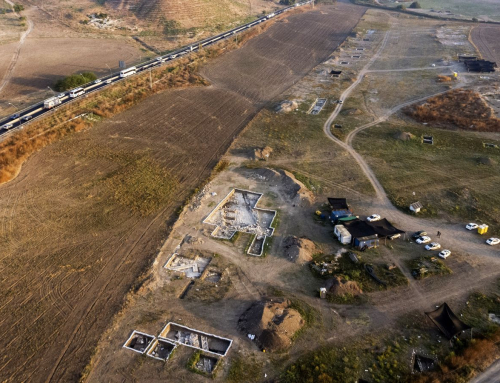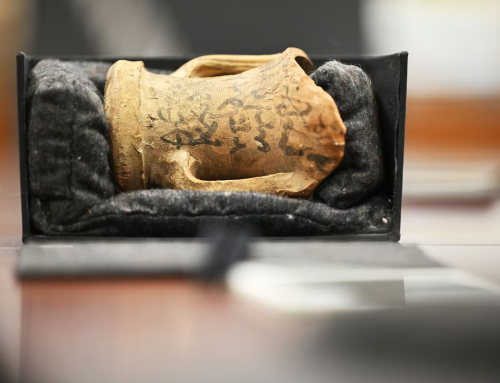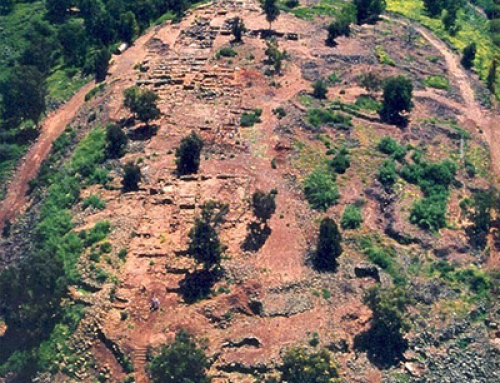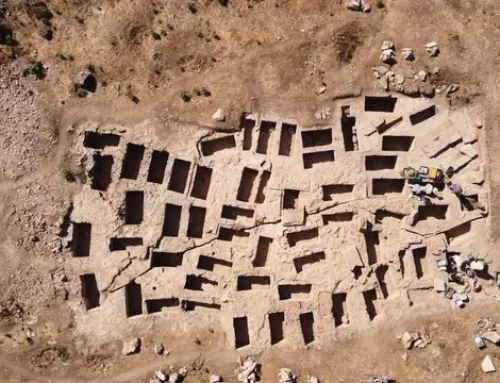Anew study brings together previous research on five locations near Jerusalem and suggests that the Biblical account of an extensive kingdom under David was accurate, setting the timeline at least 200 years earlier than some researchers previously thought. The study is just the latest shot fired in the battle between the “Biblical minimalist” school of archaeology and researchers who see the Bible as a fairly accurate representation of historical events.
An article by Professor Yosef Garfinkel of the Institute of Archaeology at Hebrew University was published on Monday in the peer-reviewed institute publication Jerusalem Journal of Archaeology titled “Early City Planning in the Kingdom of Judah: Khirbet Qeiyafa, Beth Shemesh 4, Tell en-Naṣbeh, Khirbet ed-Dawwara, and Lachish V,”. In the research paper, Prof. Garfinkel theorized that Biblical King David ruled over an extensive empire more than 200 years earlier than previously thought. Prof. Garfinkel worked off the premise that a kingdom required extensive infrastructure.
“What is a kingdom?” countered Garfinkel. “You need cities and roads and military power and economic power and writing.”
In the paper, Prof. Garfinkel reexamines previous studies of the five cities that were in close proximity to Jerusalem, all less than one day’s walk from the capital.
“The evidence was known before. It is not a matter of new discoveries,” Prof. Garfinkel said. “What was needed was someone to come along and observe the complete picture that these findings portray. I am glad that I was able to fulfill that role.”
The excavations that formed the basis of these conclusions were conducted by Saar Ganor from the Israel Antiquities Authority and Professor Michael Hazel from Southern Adventist University in Tennessee.
All of the cities studied were fortified with a casemate city wall lined with an abutting belt of houses, which incorporated the casemates as rear rooms. These casemates were positioned to guard strategic roads leading to the kingdom, indicating that the Kingdom of Judah was strong at the time. The kingdom had the ability to build fortified border cities protecting the main roads leading into the capital, Jerusalem, thereby ruling over territories in the hill country and the northern central plains.
“If you take all these sites, they have the same urban concept. They are all sitting on the border of the kingdom and sitting where you have a main road leading to the kingdom,” he said. “These cities aren’t located in the middle of nowhere. It’s a pattern of urbanism with the same urban concept.”
This urban plan is clearly recognized in the sites of Khirbet Qeiyafa, Tell en-Naṣbeh, Khirbet ed-Dawwara, and, as discussed in detail, Beth Shemesh.
“The discovery of a barrier wall in this area effectively defines the boundaries of the urban core of the Kingdom of David, putting an end to the longstanding historical debate surrounding the existence of the kingdom and its borders,” said Garfinkel.
Recently, excavations at Lachish uncovered a similar pattern indicating that David’s kingdom began expanding into the fertile Shephelah region southwest of Jerusalem as early as the 10th century BCE.
“This finding provides tangible evidence on the ground, dated to the relevant period, supporting the biblical accounts of King Rehoboam’s expansion and fortification as described in the Book of Chronicles. It is a rare instance where we can present empirical historical and archaeological evidence aligning with biblical narratives from the 10th century BCE.”
Rehoboam was King David’s grandson, Solomon’s successor and the first monarch of the Kingdom of Judah after the split of the United Kingdom of Israel.
Until now, many archaeologists believed that this expansive period of the kingdom of Judah began in the 9th or 8th century BCE, 200 to 300 years after the supposed reign of King David, or even as late as the end of the 8th century BCE.
Indeed, there is surprisingly little physical evidence of the extensive kingdom described in the Bible. The existence of King David was in doubt until the discovery of the Tel Dan Stele in 1993, which is still the only extra-biblical archeological reference to the house of David.
The “Biblical minimalist” school of archaeology maintains that the Bible cannot be considered reliable evidence for what happened in ancient Israel and that “Israel” itself is a problematic subject for historical study. This school of thought maintains that David was a local Bedouin leader who ruled over a few thousand Bedouin shepherds in the vicinity of Jerusalem. The minimalists interpret the Tel Dan Stele in a different manner, believing it refers to a geographic location known as the “House of David.”
The minimalists, led by Israel Finkelstein of Tel Aviv University, propose a “Low Chronology” in which the period that archaeologists call Iron Age I in Judah and Israel was a period of agrarian communities organized in a tribal social organization (described in the biblical tradition as the period of the judges). The next period, Iron Age ii, was a period of urban society and centralized state organization (described in the biblical tradition as the period of the kings).
“I hate to use the term ‘trying to prove the Bible’ because I’m not trying to prove anything,” said Garfinkel. “There are biblical traditions, and we can see if these have historical memories or not… It doesn’t mean that everything, 100 percent, is historical memories. Sometimes there are mistakes. Sometimes there is wishful thinking, and sometimes there is ideology.”
Dr. Scott Stripling, the Director of Excavations for the Associates for Biblical Research at Ancient Shiloh, agreed with Prof. Garfinkel’s conclusions.
“There is significant evidence for a state and an extensive kingdom at the time of David,” Dr. Stripling told Israel365. “He lays out fortifications at a number of sites from that time. There is also ample evidence of means of production and centralized control.”
Dr. Stripling added that while Prof. Garfinkel focused on five sites that have been extensively researched, ongoing research is presenting more evidence supporting the existence of the kingdom of David.
“For example, my research in Shiloh is revealing clear evidence of an Iron Age II reoccupation which corresponds to the time of David,” Dr. Stripling said. “That is new and supports Prof. Garfinkel’s theory. We’re finding more evidence that Professor Garfinkel is right, and if he is, we’ll continue to find even more evidence.”
Dr. Stripling emphasized that Biblical archaeology has been seriously limited.
“For the last three generations, there has been very little digging in Judea and Samaria because of the political situation,” he said. “I have excavated here while everybody else was saying out of harm’s way. Once others begin to excavate, they are going to find a lot more.”
Original Article – Extensive Davidic Kingdom 200 years earlier than previously thought – study – Israel365 News


